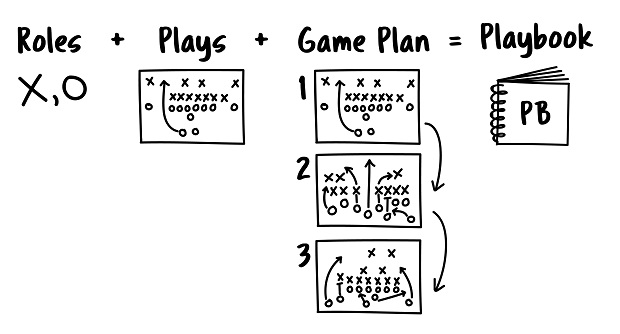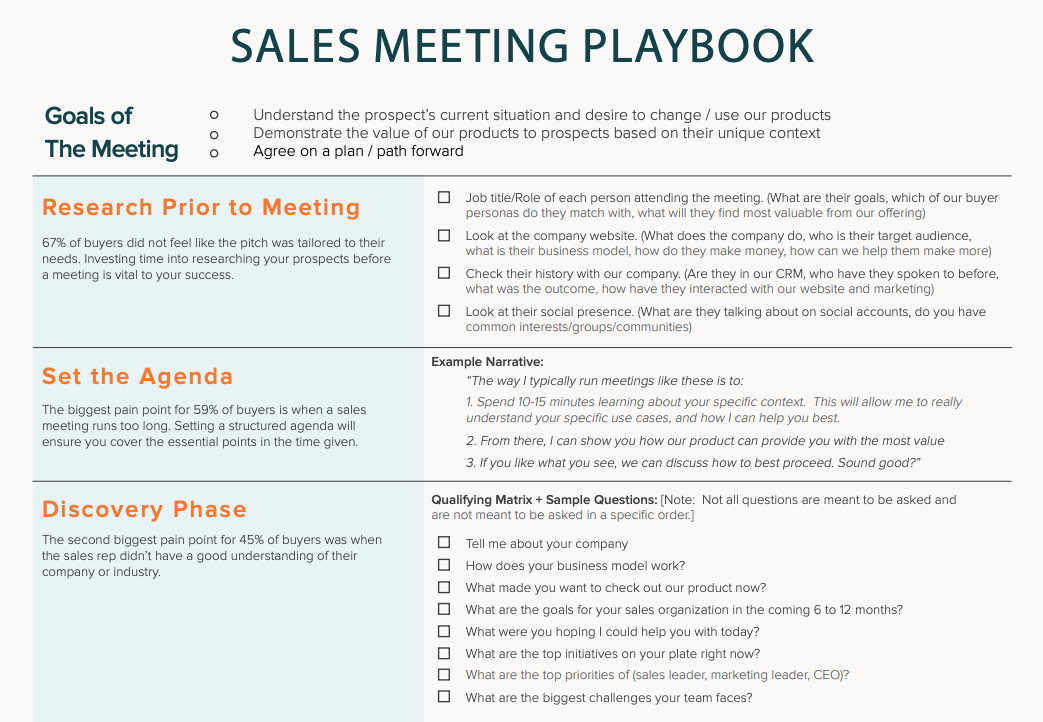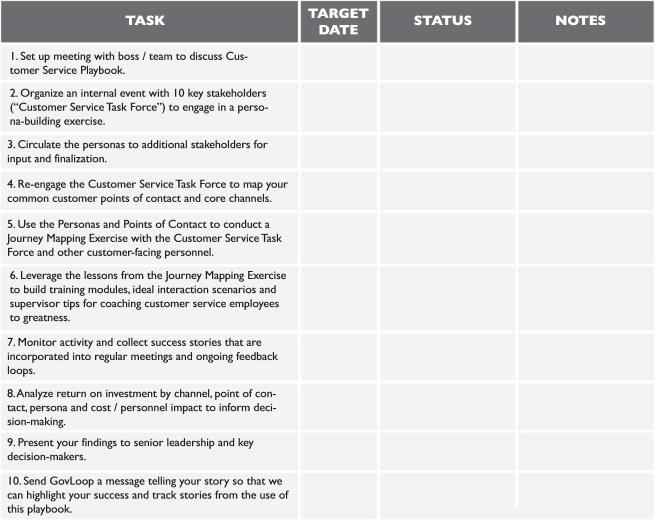
Picture the scene: you're about to construct a complex, 1000-piece LEGO set. It's intricate, precise, and no room for guesswork. Could you do it without the step-by-step guide? Maybe, but it'd be a whole lot harder, right?
That's the precise analogy for running a business without a robust roadmap. Every business, whether a fledgling startup or a seasoned enterprise, needs a comprehensive blueprint that clarifies the company's vision and the route to reach there. Enter the protagonist of our story: the business playbook.
Imagine a business playbook as the ultimate LEGO guide for your business - a meticulously designed document that houses your business's most essential elements. From the DNA of your company's core processes to the refined practices that differentiate you, it’s all in there. It's the reference manual your employees turn to, elucidating your organization's best practices, policies, and standard operating procedures (SOPs).
Consider it the encyclopedia of your business - it's packed with all the 'how-tos' that keep your operations running like a well-oiled machine. In essence, it empowers your team to follow a well-trodden path, leading to phenomenal results.
Ready for a deep dive into the world of business playbooks? Here's your comprehensive guide:
What is a Business Playbook?
A business playbook, also referred to as a company playbook, corporate playbook, or operations playbook, is a dynamic and comprehensive guide that outlines an organization's processes, practices, and strategies. This "live" document integrates both explicit and tacit knowledge — encapsulating everything from structured, formalized internal processes and standard operating procedures (SOPs) to less tangible, experiential insights often termed 'tribal knowledge', including established best practices to maximize operational efficiency and outcomes.
The primary objective of a business playbook is to establish a uniform direction and standardized reference point, enabling every member of the organization to align their efforts towards shared objectives. The playbook, which may vary in complexity and length based on the organization's size and needs, typically encapsulates a spectrum of strategic and operational elements. These include, but are not limited to, business strategy, marketing blueprints, product development roadmaps, company policies, and cultural ethos.
Through the consistent evolution and updating of this document, a business playbook becomes an invaluable tool for organizational learning, fostering a culture of continual improvement, transparency, and unified vision.
Why You Need a Business Playbook
Most businesses don't have a playbook because they don't know its importance. But there are many good reasons to have one, including:
1. Save Time for Your Employees
When you have a business playbook, you don't have to start from scratch every time you roll out a new process or campaign or transition to a new way of doing things. Instead, you can refer to your playbook and follow the provided steps.
This helps you save time and energy, which you can reinvest into your business. For example, if you're launching a new product, you can use your playbook to streamline the process and avoid costly mistakes, such as missing approval from key stakeholders.
2. Increase Efficiency and Productivity
A central reference guide can also help you avoid duplication of effort and optimize your resources. When everyone knows what needs to be done and how to do it, they can work more efficiently and get more done in less time.
This is especially important when you scale your business and need to replicate your processes across many locations or teams. For example, if you're opening a new store, you can use your playbook to train the new employees and get the store up and running.
3. Improve Communication and Collaboration
A shared resource created and used by everyone in the organization can improve internal communication as well as team collaboration, ensuring that organizational silos don't crop up between departments and employees. It becomes easier to align efforts and work toward common goals when everyone is using the same reference guide.
For example, when the sales and marketing teams use the same playbook, they know exactly what they need to do at each stage of the buyer's journey. This alignment ensures they can use their resources efficiently to attract and nurture leads and close more deals.
4. Ensure Compliance with Regulations
Depending on your industry, you may be required to comply with specific regulations, such as food safety standards or healthcare laws. A playbook outlines the processes and procedures you must follow and help you meet these requirements.
This is especially important if you have several locations or need to train new employees on compliance standards. For example, if you run a restaurant, your playbook can include the health and safety procedures you may follow to avoid violating food safety regulations.
5. Foster a Company Culture of Accountability and Responsibility
A playbook can help instill a sense of ownership and responsibility in employees. When everyone knows what's expected of them and how their role fits into the bigger picture, they're more likely to take pride in their work and be held accountable for their results.
This ownership also extends to company culture and values. Employees are more likely to follow the same set of guidelines which makes it easier to maintain a positive and cohesive culture.
6. Help Employee Onboarding and Training
New hires can be productive more quickly when they have a reference guide to help them understand their roles and responsibilities. A playbook can be valuable when training employees on company processes and procedures.
For example, if you're onboarding a new customer service representative, you can use your playbook to train them on the steps they need to take to resolve a customer issue. This step-by-step guide can help them understand the process and get up to speed immediately.
7. Produce Quality Work
When everyone is following the same process, there is less room for error when they know what needs to be done and how to do it.
This is especially important if you're working on a time-sensitive project or must meet strict deadlines. If you're launching a new website, for instance, you can use your playbook to ensure all the content is error-free and meets the standards of your target audience.
How to Build Your Business Playbook
Building your business playbook can seem daunting, but it doesn't have to be. Here are a few simple tips to get started:
1. Define Your Goals
A new business playbook can help you achieve many goals, but starting by defining what you want to accomplish is essential. For example, do you want to streamline your processes, improve communication, or ensure compliance with regulations?
Once you know your goal, you can define a structure and plan for your playbook that helps you achieve it. If you're struggling to define your goals, try brainstorming with your team or conducting a SWOT analysis. You can also browse existing templates to get started.
2. Assemble Your Team
You can't build a business playbook alone. Assemble a team of employees who are familiar with your processes and can offer insights into how they work.
This team creates, reviews, and updates the playbook as needed. They should also train other employees on how to use it. Ensure your team is diverse and includes employees from different departments and levels within the company to get a well-rounded perspective.
3. Document Your Processes
The next step is to document your current processes, which includes writing the steps involved in each process and any tools or resources needed.
If you have existing internal documentation, such as SOPs, you can use these as a starting point, but be sure to update them as needed. If you don't have any existing documentation, you can create it from scratch or use a template.
4. Organize the Content
When organizing the content, it's important to keep it concise and easy to understand. What you highlight in your business playbook will depend on your goals, but there are a few key elements you'll want to include:
- Overview of your company, including your mission, vision, and values
- Description of your target market and ideal customer
- Sales process and buyer's journey
- Organizational structure
- People and roles
- Job responsibilities
- Company's policies and procedures
- Workflow diagrams
- Training materials
- Templates and checklists
5. Make Your Business Playbook Accessible
Now that you have all your content documented and organized, it's important to have it accessible to employees when they need, at the time they need it.
This is where knowledge base software comes into play. By creating a knowledge base, you create a self-serve digital library that's accessible to any employee with permission. Not only does this ensure that your team is able to view your company's business playbook when they need it, but by making use of a knowledge base to store your business playbook, team members can update the content as they need, ensuring that your business playbook is always up-to-date.
6. Get Feedback and Input
Once your playbook is complete and readily available in your knowledge base (or other centralized repository), it's important to get feedback from your team. Ask team members to review the content and provide input on what's missing or needs to be clarified.
Ask for feedback from employees who aren't on your team. These employees can offer a different perspective on how they and what you need to include. For example, if you're building a customer service playbook, ask your customer service reps how they would use it and what would be most helpful to them.
7. Update and Revise as Needed
Your business playbook is a living document that you should update and revise regularly. New team members or changes in your processes can necessitate changes to the playbook. As you get feedback from employees, incorporate their suggestions into future versions.
Review your playbook periodically to ensure it's still relevant and accurate. For example, if you're launching a new product, update your sales process to ensure that your employees use the most up-to-date information.
Examples of Business Playbooks
Every large and small business can benefit from having a business playbook. Here are a few examples of playbooks that can help you streamline your processes and improve communication:
Sales Playbook
A sales playbook outlines your sales process, workflow, and procedures and can include information on your products, services, target market, and ideal customer. Essentially, it should contain any material that can be used by your sales team to better enable them during any stage of the selling process.

(Source)
Sales playbooks may also include scripts for sales calls, best practices for dealing with prospects, sell sheets, and emails as well as templates for proposals and presentations that your sales team can use. They're especially helpful for new sales reps learning about your products and services.
Customer Service Playbook
A customer service playbook helps customer-facing employees deal with common issues by providing scripts and templates.

(Source)
The playbook is essentially a guide that includes your company's customer service policies and procedures as well as processes for handing customer complaint escalations. Additionally, you may find training manuals to help with improving product knowledge as well as templates for performing customer service performance reviews in a customer service playbook. This ensures your customer service representatives have a systemized way of working with your company's customers to ensure a great experience.
Human Resources Playbook
A human resources playbook helps onboard new employees and ensure they're familiar with your company's policies and procedures. They may also include an employee handbook to cover topics such as attendance, benefits, and dress code.

(Source)
Other information, such as a list of FAQs that new employees or their managers may have and contact information for HR personnel, can also be included.
Channel Playbook
Company partners may each have their way of doing things, making it difficult to manage them effectively. A channel playbook can help by providing a consistent framework for working with your partners.
This playbook typically includes information on your company's expectations and templates and tools that you can use to streamline the process. Include contact information for key personnel on both sides to make communication easier.
Best Practices for Creating a Business Playbook
Focusing on the following best practices can help you create an effective business playbook:
1. Make it Accessible
Storing your business playbook in a central location easily accessible to employees is crucial. If it's difficult for employees to find or use, they're less likely to reference it when needed.
There are a few different ways you can make your playbook accessible:
- Create an internal knowledge base to make a digital copy that can be easily accessed, searched, and updated online
- Store it on a shared drive or intranet site
- Print physical copies and distribute them to employees
If you choose to store your playbook electronically, format it in a way that's easy to navigate and search. If you have a lot of content, consider organizing it into sections or chapters with an index or table of contents.
2. Dedicate Subject Matter Experts
Employees are more likely to use your business playbook if they feel confident in its accuracy. Assigning employees as subject matter experts (SMEs) for specific sections can help ensure that the information is up to date.
These SMEs should maintain their assigned playbook section and ensure accuracy. They should also be available to answer questions that employees may have.
3. Make it Visually Appealing
Including images, graphics, and videos in your business playbook can make it more visually appealing and easier to understand. If you have a lot of text-based content, consider using headings, bullet points, and white space to break it up.
Use different colors and fonts to highlight important information or call out specific sections. Including screenshots can also be helpful, especially for processes done electronically.
4. Scale it as Needed
You'll need to update your business playbook as your business grows and changes. Review it regularly and update it as needed.
You may also create multiple versions of your playbook, such as an abbreviated version for new employees or a more detailed version for experienced employees. For example, if your team faces a common pain point, create a playbook section addressing it.
5. Incorporate it Into the Employee Onboarding Process
Integrating your business playbook into the employee onboarding process can help ensure that new employees are familiar with it.
Include a section on the playbook in your employee handbook or have new employees complete a quiz on the contents of the playbook. For example, you could require new employees to read the company policies and procedures section and then answer a series of questions to show their understanding.
Streamline Your Operations With Business Playbooks
In the ever-evolving business landscape, having a well-structured, comprehensive, and accessible business playbook can be a game-changer for your organization. Whether it's streamlining operations, improving communication, fostering a positive company culture, or ensuring compliance, the benefits of a business playbook are far-reaching.
The key is to make your playbook a living document that is constantly updated and reviewed, ensuring it remains an accurate reflection of your business' practices and policies. But how can you ensure your playbook is easily accessible, updateable, and user-friendly?
Helpjuice’s knowledge base software is the solution. With its intuitive design, Helpjuice allows you to create a digital library that is easily accessible by all employees, at the time they need it. This ensures that your team is not only able to view your company's business playbook when they need it, but also update the content as necessary, ensuring your playbook is always up-to-date and relevant.
Get started with Helpjuice today and unlock the true potential of your business playbook. Streamline your processes, increase efficiency, and drive your business success to new heights.
FAQ
Q1. What is the Difference Between an SOP and a Business Playbook?
Imagine an SOP as a focused laser beam, zeroing in on the nitty-gritty of a specific task. It's your go-to manual for things like "How do we sanitize the equipment?" or "What's the procedure for handling a customer complaint?". They are the detail-obsessed, step-by-step scripts that guarantee consistency, accuracy, and compliance in operational tasks.
Now, imagine a business playbook as the dazzling Northern Lights, covering the broad sky of your company’s operations. It's not just about the details of individual tasks, it's about your company's philosophy, its game plan, and its spirit. From marketing tactics and sales workflows to your company culture and core values, a business playbook is the wide-angle lens through which your whole business is viewed. SOPs are the keynotes in this grand symphony, but the Playbook is the conductor orchestrating the entire performance.
Essentially, an SOP is a specific set of instructions for a specific task, while a business playbook is a broader guide to running the business as a whole. Both are important tools in maintaining consistency, ensuring quality, and guiding decision-making within a business.
Q2. What are the Key Elements of a Business Playbook?
A well-constructed business playbook typically includes the following key elements:
- Company Overview: Your mission, vision, and core values.
- Strategic Goals and Objectives: The major goals of your company and the steps needed to achieve them.
- Target Market: Description of your ideal customer, including demographics, psychographics, and key buyer behaviors.
- Sales Process: Outlines your buyer's journey, sales tactics, and strategies for attracting, converting, and retaining customers.
- Marketing Plan: An overview of your marketing strategy, including digital and offline tactics, channels used, and key performance metrics.
- Product or Service Information: Descriptions of your products or services, their unique selling points, and how they meet customer needs.
- Organizational Structure: Outlines the company's hierarchy and departments, their functions, and the interrelationship between them.
- Roles and Responsibilities: Clearly defined roles and responsibilities for each position in the company.
- Standard Operating Procedures: Detailed procedures for common tasks and operations in the company.
- Company Policies: Guidelines and expectations for employee behavior, including codes of conduct, dress code, and other related policies.
- Workflow Diagrams: Visual representations of the different processes within your company.
- Training Materials: Resources to support the training and development of employees, including onboarding documents, ongoing training resources, and professional development materials.
- Templates and Checklists: Standard templates and checklists for common tasks and processes to streamline operations and maintain consistency.
- Regulatory Compliance Guidelines: Information on regulations your company must comply with and how to do so.



![Guide to Training Call Center Agents [2024]](https://static.helpjuice.com/helpjuice_production/uploads/upload/image/12982/3585033/1698261103181-call-center-agent-turnover-previous-5-years-infographic.jpg)

